The "take, make, dispose" model has shaped the way we use resources for as long as many of us can remember. However, for the most part, it’s no longer fit for purpose, particularly given that sustainability has become increasingly central to consumer thinking. Thankfully, the circular economy increasingly offers a better approach, where materials are kept in use, waste is reduced, and value is recovered at every stage.
It’s a major shift, and while packaging might not be the first thing that comes to mind, it plays a large role in making the system work. Packaging touches nearly every part of the product life cycle, from manufacturing to logistics to the end consumer. When designed well, it can actively support a more sustainable economy.
What is the circular economy?
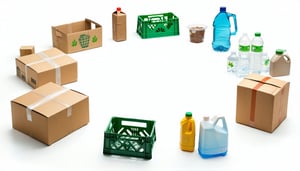
Put simply, the circular economy is about designing products and systems that keep resources in use for as long as possible. Instead of a straight line from raw materials to landfill, it serves a loop where materials are reused, repurposed or regenerated.
The goal is to reduce our dependence on finite resources while cutting back on pollution and waste. This model challenges businesses to rethink design, production, and end-of-life processes from the ground up. In the case of packaging, that might mean shifting from single-use plastics to more renewable materials or designing packaging that’s easier to collect and recycle.
It’s about more than recycling, though. It's a sizable mindset shift that puts long-term thinking ahead of short-term convenience. And when it comes to packaging, this way of thinking opens the door to smarter, more sustainable solutions.
How packaging supports the circular economy
While packaging is often viewed as disposable, it doesn’t have to be. In fact, with a better approach, it can become a driver of circularity, helping reduce waste and improve resource efficiency. Here's how:
1. Designing for recyclability
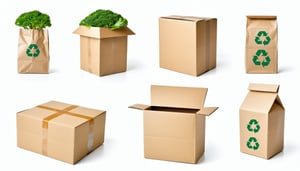
Packaging that’s easy to recycle is a key part of the puzzle. Using single-material formats, avoiding unnecessary coatings or adhesives, and making sure labels are clear all help ensure packaging can be properly sorted and reused within existing recycling systems.
Designing packaging for recyclability also means understanding how local waste management systems work. What’s recyclable in one region may not be accepted in another, so aligning packaging design with widely accepted recycling standards is crucial. Ultimately, the easier it is to recycle a piece of packaging, the more likely it is to be kept in circulation.
2. Cutting down on excess
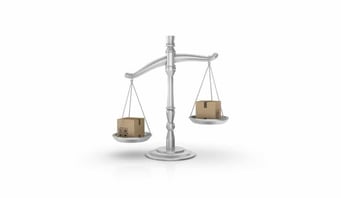
We’ve all received a needlessly oversized package in the post, and this issue remains today.. Right-sizing boxes, switching to lighter materials, and removing unnecessary layers help this by reducing the amount of material used, and it often brings cost savings too.
Excess packaging has the further issue of creating more waste and adding to higher shipping costs, whilst driving up carbon emissions. That’s why being more strategic with material choices and structural design is essential to help businesses strike a balance between protection and efficiency. This will deliver better outcomes for both the environment and their bottom line..
3. Using recycled materials
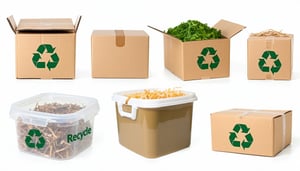
Introducing recycled content into packaging helps close the loop. No matter if it’s recycled cardboard or plastic, it all reduces the need for virgin materials and gives new life to what would otherwise be waste.
Using recycled materials also demonstrates a commitment to sustainability in a tangible way. It supports the recycling industry, reduces the demand for raw materials, and often requires less energy to produce than virgin equivalents. For businesses, it’s an opportunity to reduce their environmental impact while appealing to eco-conscious customers, giving an added boost to their brand.
4. Creating systems for reuse

As you might expect, reusable packaging is making a comeback, seeing its increased use in supply chains and business-to-business settings. Durable crates, returnable containers and multi-use wraps can dramatically cut down on waste when managed properly, extending the life of the packaging and reducing emissions.
It’s true that reuse models mostly require more planning and coordination, but they often bring long-term savings and environmental benefits. And when supported by reverse logistics systems, tracking tools, or deposit schemes, reusable packaging becomes a highly effective solution that moves us away from the single-use mindset.
5. Exploring compostable options
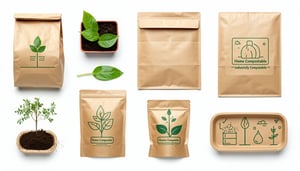
In the right context, compostable packaging also has a role to play. It's extremely useful in food or agricultural sectors where composting infrastructure is available. But as with all materials, it has to be used wisely and disposed of correctly to deliver environmental benefits.
To this end, it's important to differentiate between industrially compostable and home-compostable packaging, and to communicate disposal instructions clearly to end users. Compostable materials often aren't a one-size-fits-all fix, but they can reduce waste and add value when integrated thoughtfully into a wider packaging strategy.
It’s all about collaboration

Circular packaging doesn't happen in a vacuum. It takes joined-up thinking across the supply chain (from manufacturers and distributors to end users and recyclers). Fortunately, the positive impacts are becoming increasingly documented, meaning businesses that build these relationships and think long-term will be better placed to lead on sustainability.
That collaboration often starts with better communication, matching expectations on materials, logistics, and end-of-life processes. It requires everyone along the chain to work together, making it far easier to create packaging systems that are genuinely circular. And the benefits ripple outward, from reduced emissions to improved brand trust.
Encouragingly, the momentum is building. More companies are looking for packaging solutions that do more than just protect products. They want options that support their sustainability goals and help reduce their environmental impact.
Turn your sustainability goals into actions
We're seeing strong interest in more eco-friendly products, particularly in the ecommerce sector, with a growing number of businesses looking for protective options that have some reuse value or do away with the reliance on virgin plastic. That’s why we’re on hand with sustainable solutions and materials innovation to meet the challenge for businesses and help make a scalable switch to solutions that are ultimately friendlier for the planet.
Is your business considering a move towards more sustainable packaging? We'd love to discuss your next packaging project.
Contact us today by sending a message, emailing sales@allpack.uk.com, or calling 01543 396 700 to explore solutions tailored to your business.